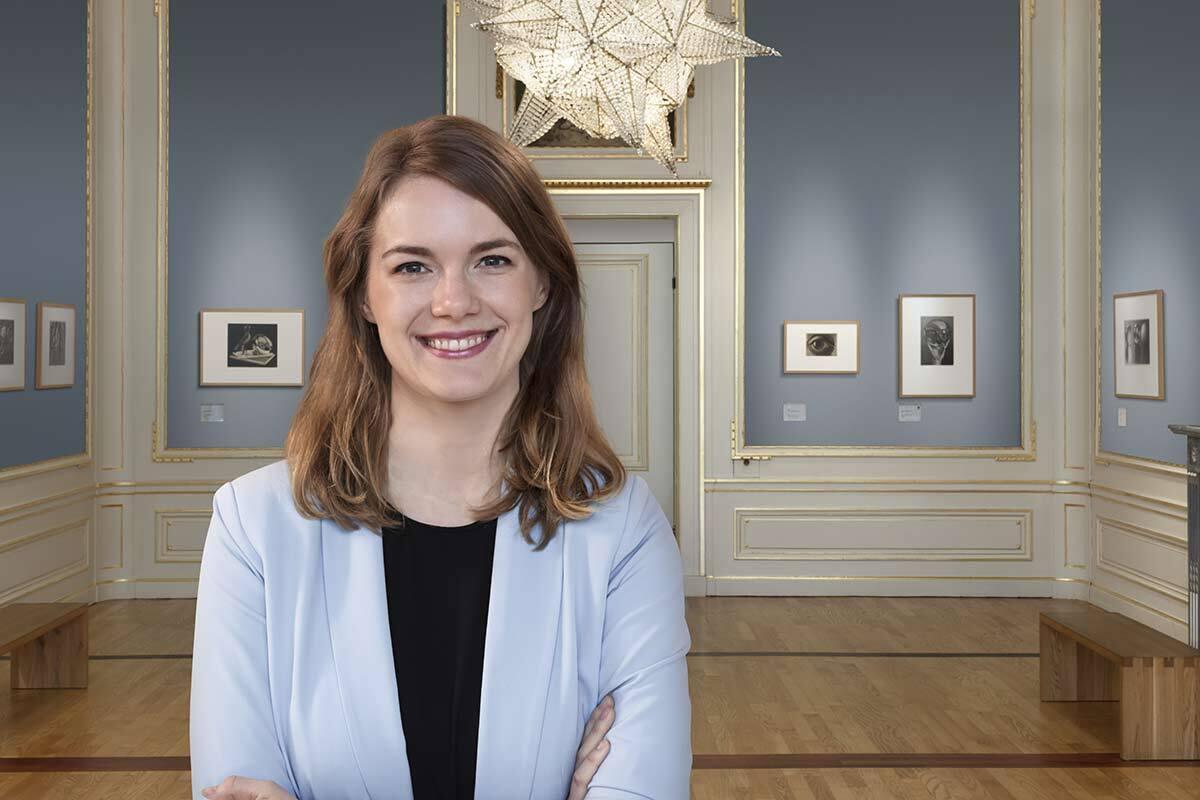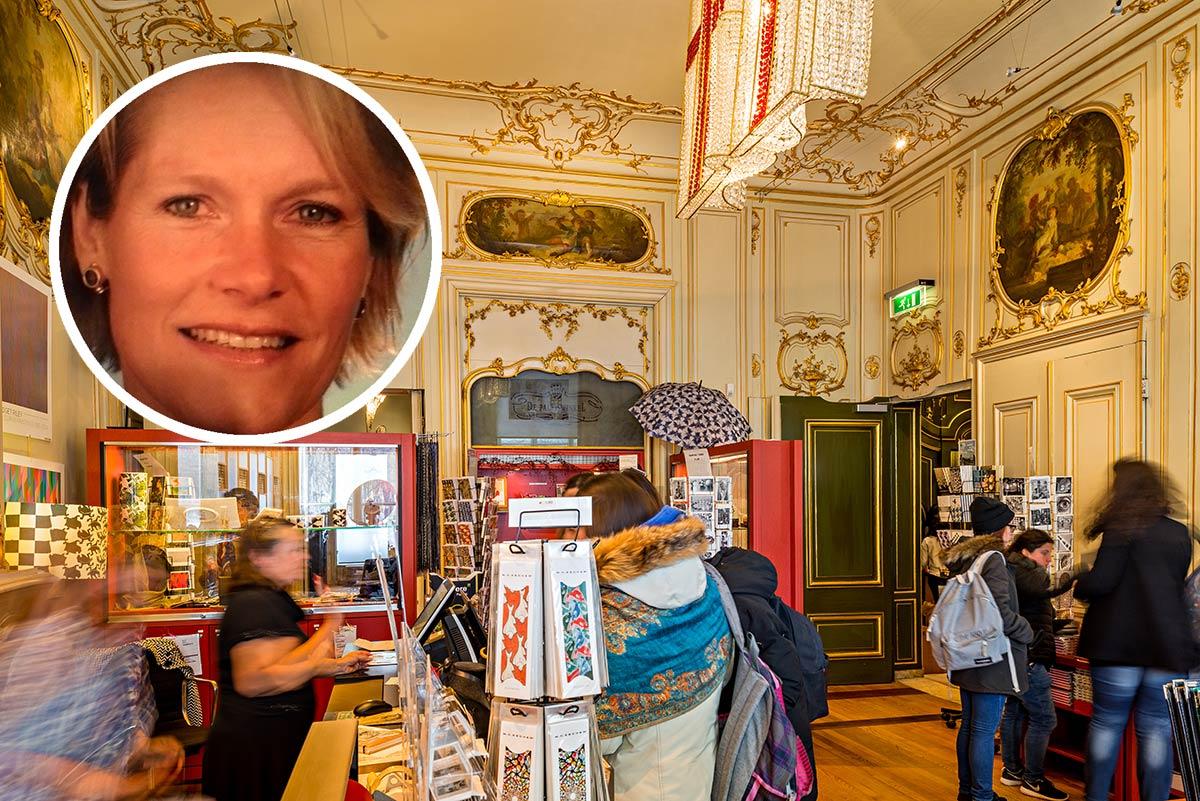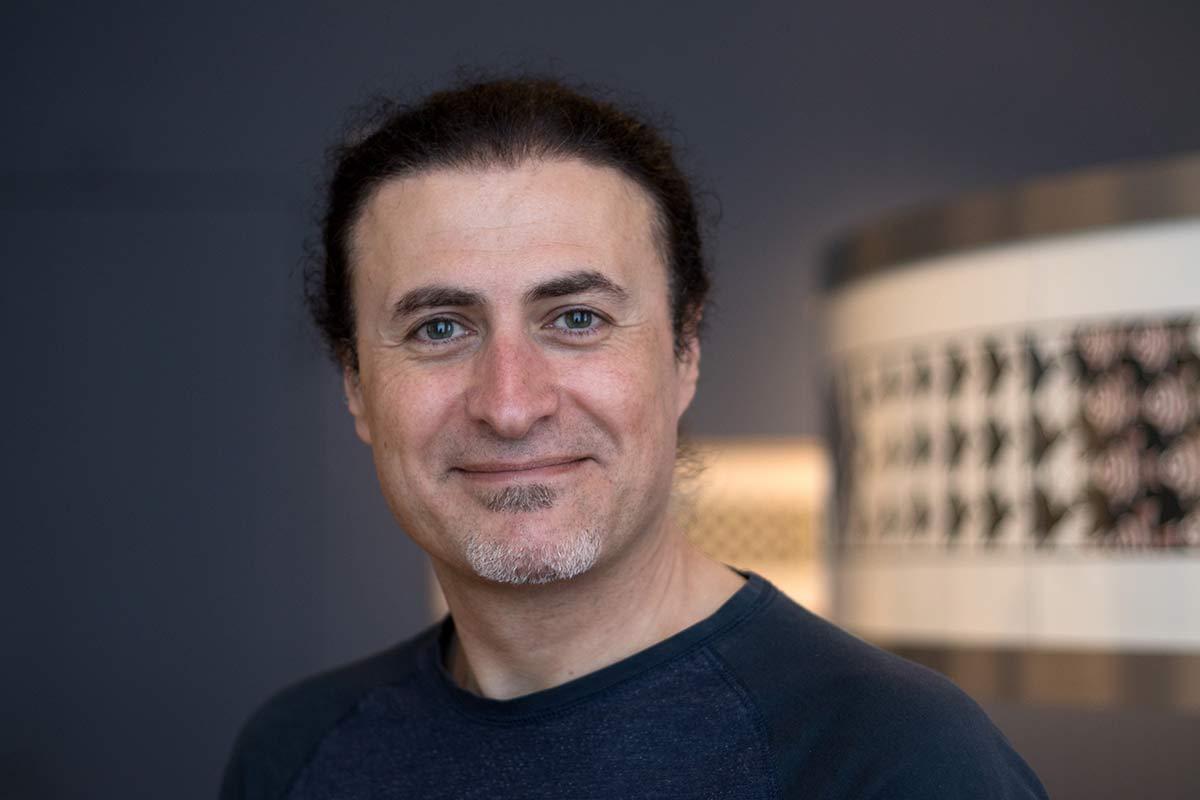
A lot has changed in the world since the corona crisis. This is also the case at Escher in The Palace. Our colleagues are happy to tell you about these new times in the museum and their own function in our Co-worker Monday.
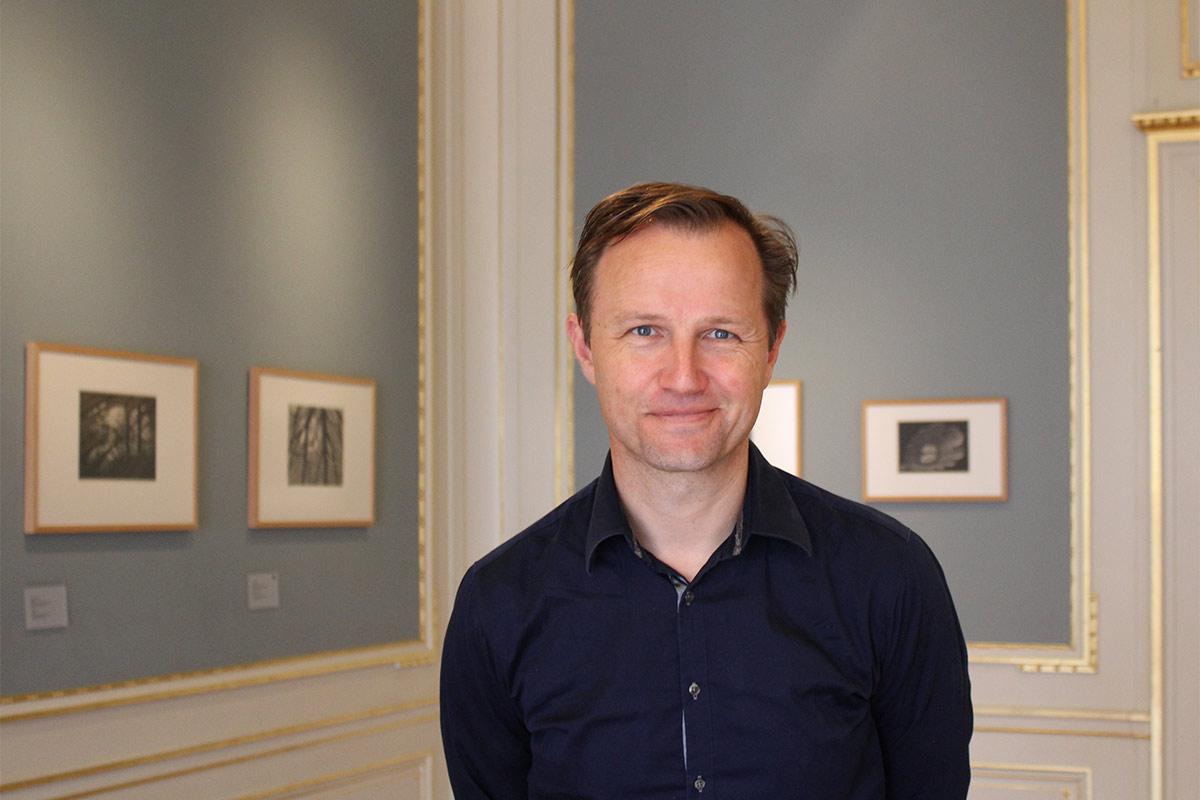
Editor Erik Kersten
What is your job at Escher in The Palace?
According to my business card, I am a web editor. This basically means that I am responsible for the website and social media channels. However, when I was introduced to someone recently by our manager, he called me the ‘all-things-digital’ man. That is actually a very apt description. I work on everything that has a digital component. My first major project was to build an impressive new website. So, that is exactly what I did, together with our web agency Kaliber. And I must say I am very satisfied with the end result. All content on the website was written or edited by me personally. In addition to updating the website and social media, I also work on the audio guides and touchscreens installed in the museum.
What is your favourite work of art?
A difficult question. I think so many works by Escher are amazing. But if I had to choose just one, I would say Concentric Rinds (1953). I have also written an Escher Today about this in the past. Like many of Escher's prints, the work is highly associative. When you look at it, your thoughts run wild. Escher always said that he didn't put deeper meanings or messages into his work. Yet you can get a lot out of them simply using your own frame of reference. For example, to me this print immediately evokes associations with time machines because I have read many comic books in my life. Also, the rings seem to move, which reminds me of the gigantic machine in the movie Contact, in which the main character, played by Jodie Foster, makes contact with extra-terrestrial life. Or I’m reminded of a gyroscope or a sphere with rings, like they used in the past to depict the cosmos. This is always my experience with Escher: his work evokes associations, wonderment and questions. It really gets you thinking.
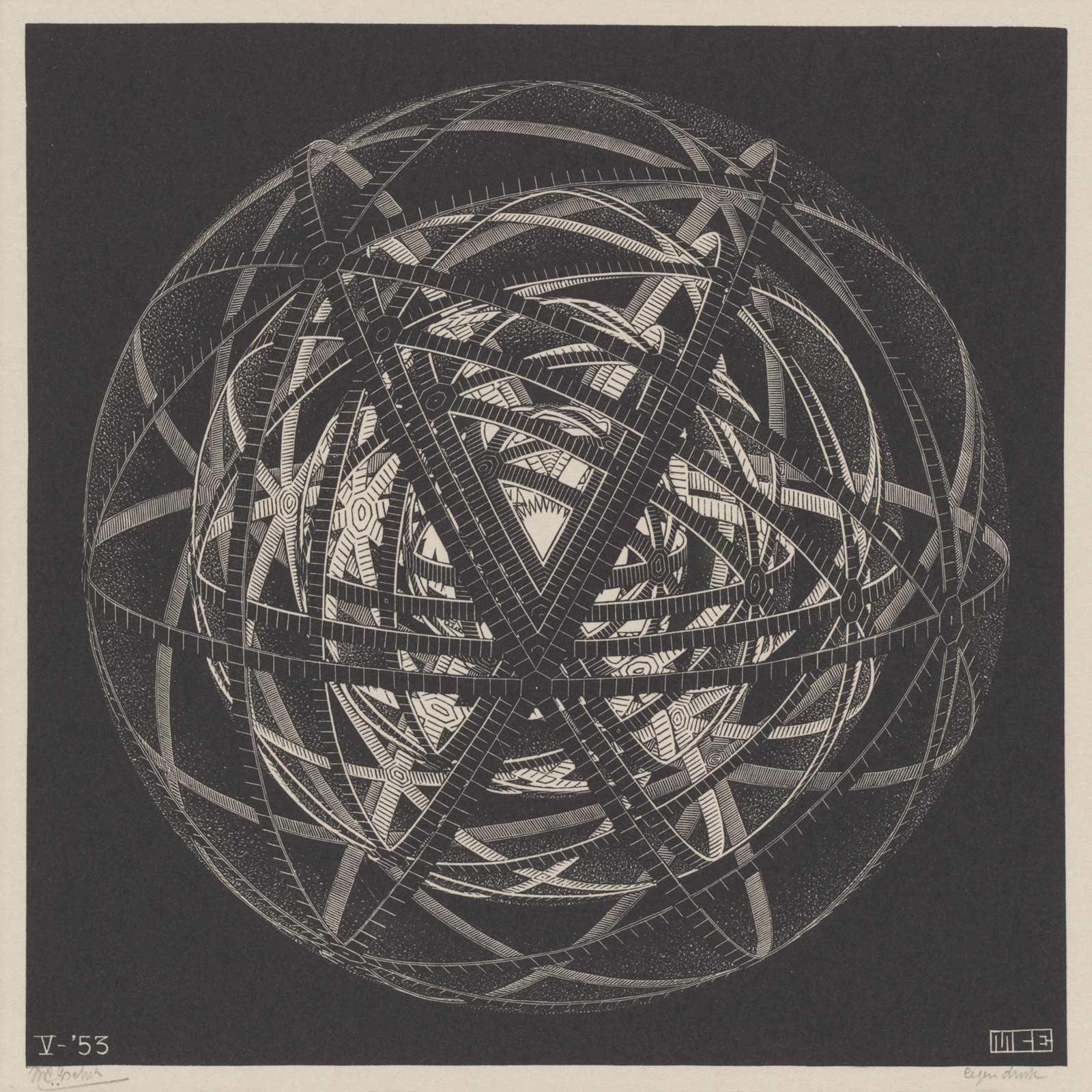
M.C. Escher, Concentrische schillen (Concentrische ruimtevulling/Regelmatige bolverdeling), houtgravure, mei 1953
What do you enjoy most about your job?
I love that I can combine my experience in website construction with my background in journalism. We have a fairly small team so, as a web editor, I can also do a lot of research and get to write about Escher. In any case, I find it quite special that we get so much done with such a small team. Everything is also very organic. I have worked at companies where there was a corporate culture with a lot of meetings, which only slows things down. Here we just stop by each other’s office to discuss new ideas and you can often pitch ideas you want to work on. This lets you carried out varied tasks, as you are not limited to your specific role within the museum. It also benefits the work atmosphere, since we really do everything as a team. And, of course, we work in a very beautiful place since, after all, our office is located in a former royal palace.
What are you currently working on?
I'm always working on a new’ Escher Today’. This involves a lot of research. But the biggest and most special project I am currently working on is the Escher in The Palace app. It began as a small idea to share extra information about Escher and his work that was difficult to communicate in the museum itself. Ultimately, this idea grew bigger and bigger. More funding became available and we are now in contact with app developers and have involved our visitors in the process by launching an online questionnaire. I am again working on both the technical and content aspects of the app. I always have a stack of books on my desk for finding information. And curator Judith Kadee and I recently visited the Sound and Vision archives (Beeld & Geluid) in Hilversum to find quality new material about Escher for the app.
What makes Escher's art so special?
Before I came to work here, I was familiar with Escher and his work, but my knowledge was quite basic. I had read and heard about him, but not in much detail, even though I had quite a lot of art history during my studies. Escher's work is often ignored in art history. I find that quite mind-boggling. Printmakers do not receive much attention in art history regardless but, to me, Escher's work seems special enough to be highlighted even more. He may be a different kind of artist than Vincent van Gogh, less troubled for instance, but delving into his life is very interesting. There are many letters and agendas available to us. He kept good track of his life, from his own body weight to the price of items he had purchased. He also corresponded intensely with artists and professors. And even though Escher claimed that he did not put any hidden messages in his work, you still look for them as a viewer. In my articles about his prints, I try to be as objective as possible. I find that quite difficult at times, since I am a huge fan of his work. Thematically, his work has goes in so many directions, despite the fact that it is all graphic. It is also cyclical, as elements from earlier works often recur. It’s all intertwined. I like to compare his work with the book Alice’s Adventures in Wonderland, by Lewis Carroll, in which Alice ends up in a kind of infinite world after falling down a rabbit hole. Escher's oeuvre also draws you into an infinite world.
